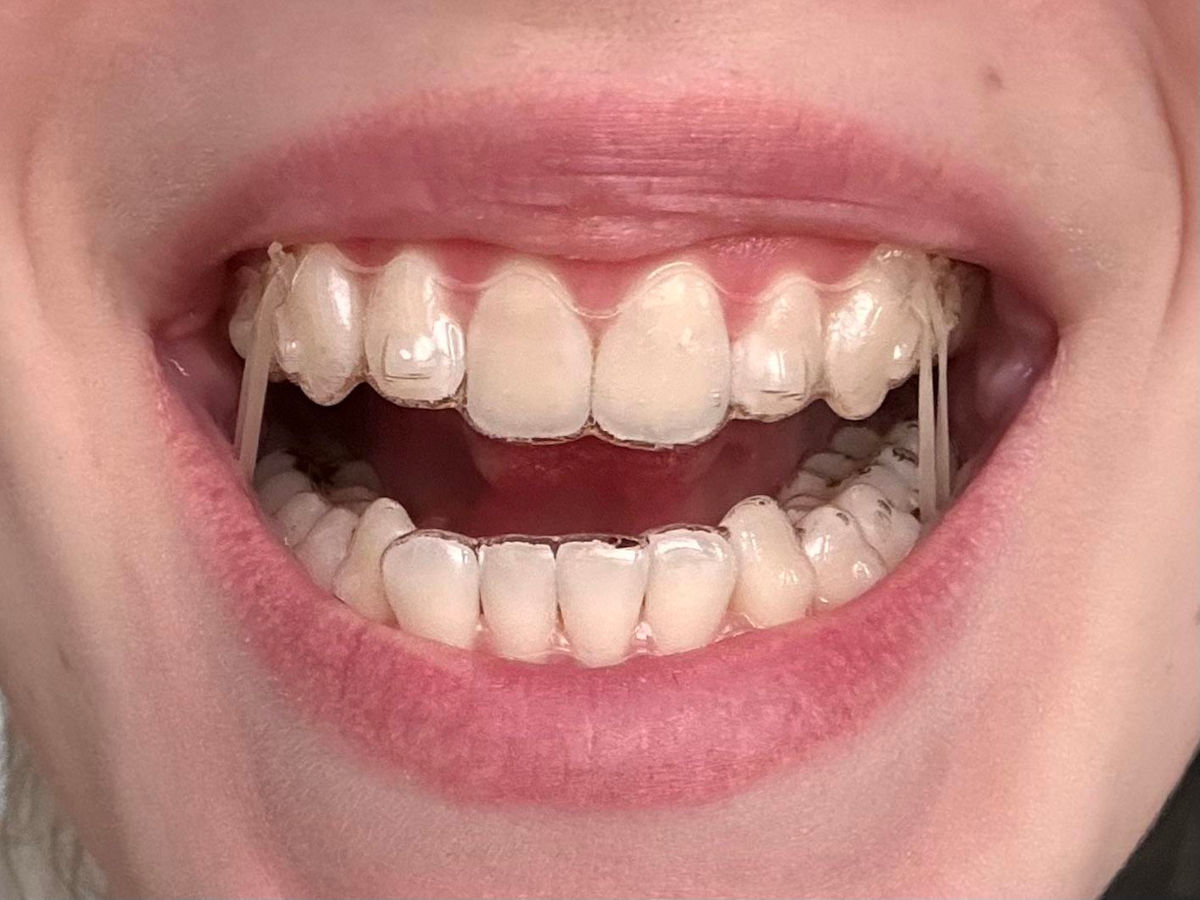Contents

Orthodontic Elastics with Invisalign: Everything You Need to Know
Elastics are often an integral part of orthodontic treatment, whether it's with fixed braces or clear aligners like those from Invisalign. Discover exactly what these small rubber bands are for, how long they need to be worn, how to attach them to your aligners, and their pros and cons.
How Long Do You Wear Elastics with Invisalign?
For the force exerted by the elastics to be constant, it is imperative to change them every day. Wear them continuously, including during meals if it's more convenient for you. Ideally, put on new elastics each morning after brushing and keep them on until the evening. Replace them immediately if they break.
The total duration you'll need to wear elastics will be determined by your orthodontist based on your case. Follow their instructions carefully, or you risk delaying the end of your treatment. Elastics are generally prescribed to:
- Straighten teeth
- Align misaligned jaws
- Close wide gaps between teeth
What is the Role of Orthodontic Elastics?
Not all dental appliances require elastics, but when they do, there are two types:
- Ligatures placed around braces by the orthodontist.
- Interarch elastics that you place yourself to enhance the appliance's action and speed up tooth movement.
Elastics act as an additional, targeted force on certain teeth to move them in the right direction. They help improve the bite (the way the jaws and teeth fit together) without surgery and in a shorter timeframe.
Elastics can also be used with clear aligners like Invisalign. They attach to hooks on the aligners or buttons bonded to the teeth, positioned to pull teeth forward, backward, or sideways as needed. They are particularly useful at the end of treatment to perfect the alignment and ensure a lasting result.
How to Put Elastics on Your Invisalign Aligners
You will need to place the elastics on your aligners yourself according to your practitioner's instructions. The technique is simple but takes a little practice:
- Use a mirror for your first attempt.
- With your thumb and index finger, hook each end of the elastic onto the designated hook or button on your upper and lower aligners.
- Ensure you have placed the elastic on the correct teeth to achieve the desired effect.
The elastics connect your upper and lower aligners to provide a connecting force that will correct your bite and position your jaws optimally.
What Are the Pros and Cons of Elastics?
| Advantages | Disadvantages |
|---|---|
| Discreet and not very visible | Possible initial discomfort and soreness |
| Improve chewing comfort | Risk of breaking |
| Easy to put on | Daily change required |
Another significant advantage: elastics often help avoid surgery to correct certain bite or malposition problems.
In Summary
Combined with Invisalign aligners, orthodontic elastics can resolve most alignment and bite issues in a minimally invasive way. Provided you wear them regularly as recommended by your orthodontist!
After a brief adjustment period, their presence quickly becomes second nature. A small effort that will greatly contribute to the success of your treatment.
FAQ About Orthodontic Elastics
Are elastics included in the cost of Invisalign treatment?
Yes, the cost of elastics is included in your Invisalign treatment fee, along with the aligners and follow-up appointments. You will not have to pay extra for them.
What if I lose or break an elastic?
Replace it immediately with a new one. Your orthodontist will provide you with several bags of elastics; always keep a few with you. If you run out, orthodontic elastics are sold at pharmacies.
Are elastics painful?
The tension from the elastics can cause some discomfort for the first few days, but it usually disappears quickly. If the pain persists, talk to your practitioner, who may adjust their position or strength.
Can I remove the elastics to eat?
Since you must remove your Invisalign aligners to eat, you will naturally take off the elastics at the same time. Simply put them back on with your aligners after your meal and brushing your teeth. Always follow your practitioner's specific instructions regarding wear time.
How do I care for my elastics?
Orthodontic elastics are single-use: you should discard them and replace them with new ones every day. It is not recommended to clean and reuse them as this damages them. Daily brushing of your aligners will be sufficient to remove any residue.
